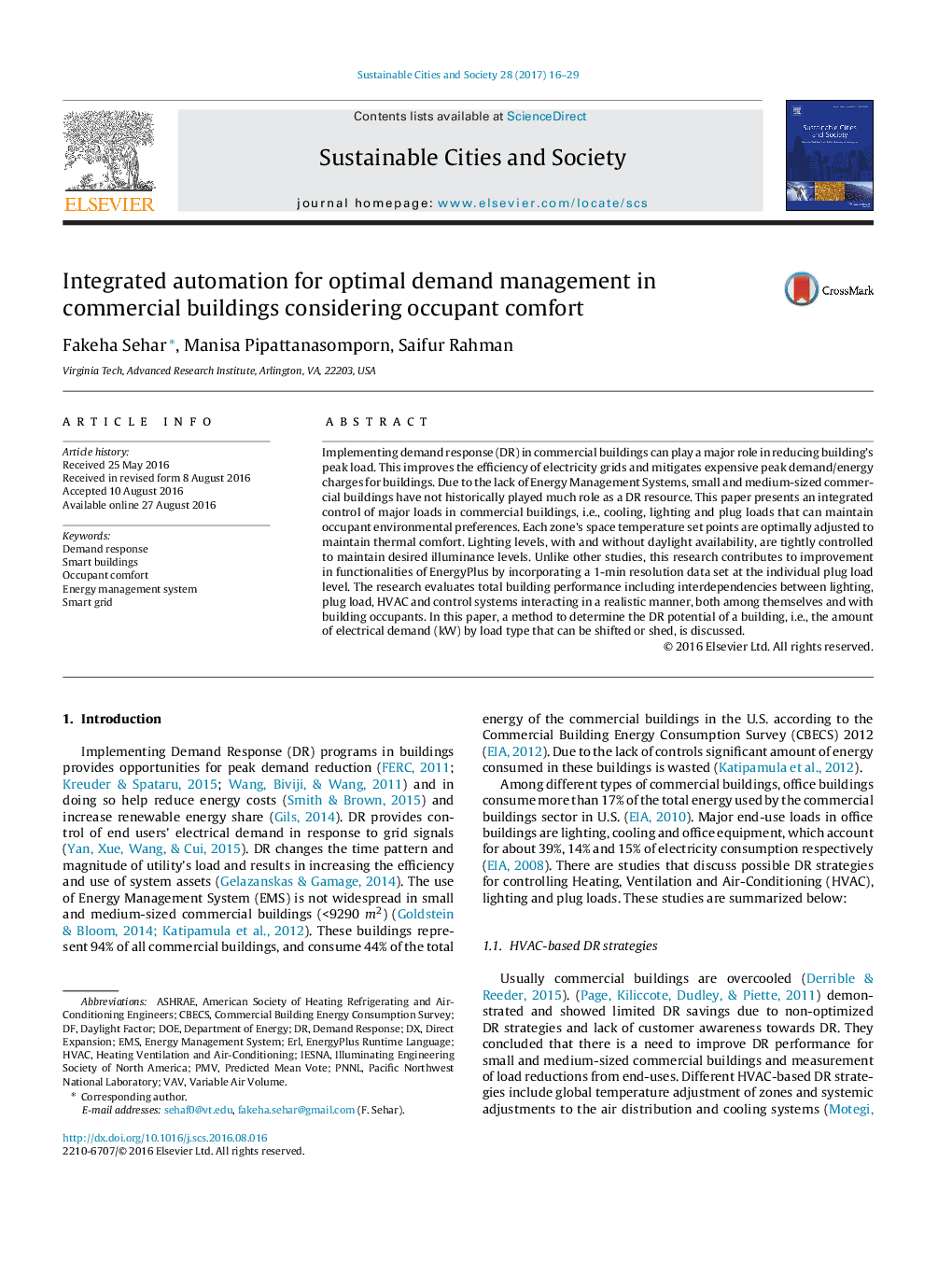| کد مقاله | کد نشریه | سال انتشار | مقاله انگلیسی | نسخه تمام متن |
|---|---|---|---|---|
| 4928213 | 1432020 | 2017 | 14 صفحه PDF | دانلود رایگان |
عنوان انگلیسی مقاله ISI
Integrated automation for optimal demand management in commercial buildings considering occupant comfort
ترجمه فارسی عنوان
اتوماسیون مجتمع برای مدیریت تقاضای بهینه در ساختمان های تجاری با توجه به راحتی مسافر
دانلود مقاله + سفارش ترجمه
دانلود مقاله ISI انگلیسی
رایگان برای ایرانیان
کلمات کلیدی
CBECSASHRAEEMSheating ventilation and air-conditioningPMvERLDOEPNNLVAVPacific Northwest National Laboratory - آزمایشگاه ملی شمال غربی اقیانوس آرامHVAC - تهویه مطبوعVariable air volume - حجم هوا متغیرOccupant comfort - راحتی مسافرتیPredicted mean vote - رای مثبت پیش بینی شدهSmart buildings - ساختمان های هوشمندEnergy management system - سیستم مدیریت انرژیSmart grid - شبکه هوشمندdaylight factor - عامل نور روزDepartment of Energy - وزارت انرژیDemand response - پاسخ تقاضاDirect expansion - گسترش مستقیم
موضوعات مرتبط
مهندسی و علوم پایه
مهندسی انرژی
انرژی های تجدید پذیر، توسعه پایدار و محیط زیست
چکیده انگلیسی
Implementing demand response (DR) in commercial buildings can play a major role in reducing building's peak load. This improves the efficiency of electricity grids and mitigates expensive peak demand/energy charges for buildings. Due to the lack of Energy Management Systems, small and medium-sized commercial buildings have not historically played much role as a DR resource. This paper presents an integrated control of major loads in commercial buildings, i.e., cooling, lighting and plug loads that can maintain occupant environmental preferences. Each zone's space temperature set points are optimally adjusted to maintain thermal comfort. Lighting levels, with and without daylight availability, are tightly controlled to maintain desired illuminance levels. Unlike other studies, this research contributes to improvement in functionalities of EnergyPlus by incorporating a 1-min resolution data set at the individual plug load level. The research evaluates total building performance including interdependencies between lighting, plug load, HVAC and control systems interacting in a realistic manner, both among themselves and with building occupants. In this paper, a method to determine the DR potential of a building, i.e., the amount of electrical demand (kW) by load type that can be shifted or shed, is discussed.
ناشر
Database: Elsevier - ScienceDirect (ساینس دایرکت)
Journal: Sustainable Cities and Society - Volume 28, January 2017, Pages 16-29
Journal: Sustainable Cities and Society - Volume 28, January 2017, Pages 16-29
نویسندگان
Fakeha Sehar, Manisa Pipattanasomporn, Saifur Rahman,
